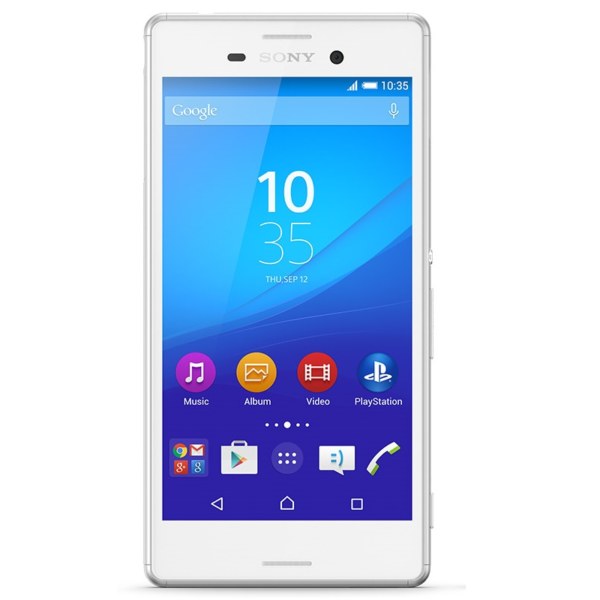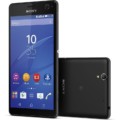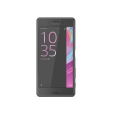- Home
- List of devices
- Sony
- Sony Xperia M4 Aqua
Sony Xperia M4 Aqua


-
CPU:
-
RAM:
-
Storage:
-
Display:
-
Camera:
-
OS:
Crafted from the ground up, Xperia M4 Aqua has understated premium looks – a tempered glass display, with the svelte 136g waterproof (IP65/8 rated) body reengineered for cap-less microUSB charging, offering flexible usage wherever you are.
Xperia M4 Aqua will be available in classic White and Black, but also fresh Coral and Silver3. Sony’s adopted the same subtle principles in its take on Android 5.0 Lollipop’s material design, in keeping with that distinctive minimalist approach to user interface, interactions and native apps.
Xperia M4 Aqua will come with the new look Xperia Lounge Silver, bringing apps, software updates, entertainment, bespoke offers and tips delivered throughout the product lifecycle. As part of this, you’ll be able to enjoy bonus film clips and television episodes4 through the Privilege Plus Movies app5.
“Xperia M4 Aqua represents our renewed mid-range focus – with no compromises” said Dennis van Schie, Senior Vice President, Head of Sales and Marketing at Sony Mobile Communications. “Offering the most popular standout features made famous by our Xperia Z Series; camera capability, two-day battery life and waterproofing – Xperia M4 Aqua brings a proposition and price, products in this section of the market simply cannot match.”
Xperia M4 Aqua’s impressive 13MP rear camera is powered by Sony’s Exmor RS™ mobile sensor with a large F2.0 aperture, and ISO 3200 sensitivity. It’s powerful digital compact camera technology – and intelligent Superior Auto Mode simplifies your interactions, automatically sensing up to 52 different scenarios, for vivid shots in low-light or strong backlight every time.
Just as with the rear, the 5MP selfie camera has a super wide-angle lens with an 88° field of view, so no-one’s left out of shot – and Portrait Retouch allows you to add fun finishing refinements. The popular selfie editing feature sits alongside Sony’s full suite of preloaded Xperia Camera apps, including other favourites; Sound Photo for adding a short clips to your pictures and Movie Creator, which automatically converts your pictures and videos into snappy thirty second vignette clips – which makes collecting memories or sharing on social media, super quick and easy.
Whilst some might need to use their smartphone for short bursts on long days, you don’t have to, with Xperia M4 Aqua’s two-day battery life, eliminating the need for regular charging. If that isn’t enough, activate Battery STAMINA Mode to optimize how your battery is used and Ultra STAMINA Mode to keep your phone running on its core functions for a week.
Supporting this optimal balance of performance and power is a Qualcomm® SnapdragonTM 615 processor6 featuring octa-core 64-bit CPUs, advanced multimedia processing and an integrated 4G LTE modem. Thanks to the Snapdragon 615 processor, you can enjoy seamless access to your Xperia Lounge content and experience the fastest news and information download, find your way using maps, check and send email, send pictures to friends and family in seconds and make the most of lag-free online music and video streaming on the go.
Specs
General
| Announced | 01 March, 2015 |
| Released | 01 June, 2015 |
| Status | Available |
Display
| Display Type <strong>Display Technology => </strong> A number of display technologies and types used in mobile phones => TFT (Thin Film Transistor), IPS (In-Place Switching), OLED (Organic Light Emitting Diode), AMOLED (Active-Matrix Organic Light-Emitting Diode), Super AMOLED (an even advanced version of AMOLED), Resistive Touchscreen (Resistive touchscreens contain two layer of conductive material with a very small gap between them which acts as a resistance), Capacitive Touchsceen (Capacitive touchscreen technology consists of a layer of glass coated with a transparent conductor) | IPS LCD |
| Size | 5 |
| Resolution | 1280 x 720 |
| Pixel Density <strong>Pixel Density (PPI)</strong> is refers to the concentration of pixels on a particular display, measured in pixels per inch (ppi). Pixel density is calculated by dividing the diagonal pixel resolution of a display by its diagonal size, higher pixel density better display quality. | 294 ppi |
| Display Protection <strong>Display Protection => </strong> Gorilla Glass is a special alkali-aluminosilicate glass shield with exceptional damage resistance that helps protect mobile displays from scratches, drops, and bumps of everyday use, It is always better to go for a smartphone with Gorilla Glass for that added protection and peace of mind. | Corning Gorilla Glass 3 |
| Secondary Display | None |
Hardware
| Chipset <strong>Chipset</strong> is a group of integrated circuits designed to perform one or a more dedicated functions, often with real time computing constraints, Popular smartphones are equipped with more advanced embedded chipsets that can do many different tasks depending on their programming. | Qualcomm Snapdragon 615 |
| CPU <strong>CPU</strong> (Central Processing Unit) mostly known as processors, CPU processes instructions in order to carry out certain functions that make your device operate properly. Processors are often described as the brain of computers, smartphones and tablets, Smartphones and tablets rely on processors to carry out their every task, Processors are an incredibly important factor in selecting any type of computing device, including your smartphone. | 1.5GHz quad core |
| GPU <strong>GPU</strong> (Graphics Processing Unit) is a single-chip processor designed to rapidly manipulate and alter memory to accelerate the creation of images in a frame buffer intended for output to a display, This includes things such as lighting effects, object transformations, and 3D motion. | Adreno 405 |
| RAM (Memory) <strong>RAM</strong> (Random Access Memory) is a type of computer memory that can be accessed randomly, any byte of memory can be accessed without touching the preceding bytes that allows information to be stored and accessed quickly from random locations. RAM is the most common type of memory found in computer systems, smartphones, tablets and other electronic devices. | 2GB |
| Internal Storage <strong>Internal Storage</strong> is a data storage space (flash memory) mostly used in smartphones, tablets and other electronic devices where operating system, apps, music, photos, videos, files and other user data Is stored. | 8/16GB |
| Card Slot <strong>Memory Card Slot</strong> is a special slot for inserting a memory card. Memory cards allow you to expand the phone's built-in memory, A memory card (sometimes called a flash memory card or a storage card) is a small storage medium used to store data such as text, pictures, audio, and video, for use on small, portable or remote computing devices such as mobile phones, mp3 players, digital cameras. | Yes, Up to 200GB |
| Sensors <strong>Sensors</strong> are electronic components that detects and responds to some type of input from the physical environment. The specific input could be light, heat, motion, moisture, pressure and location, The output is generally a signal that is converted to use in computing systems, a location sensor, such as a GPS receiver is able to detect current location of your electronic device. | Proximity, Accelerometer, Compass |
Battery
| Battery Type <strong>Battery Type => </strong> Cell phones run on various kinds of batteries depending on the manufacturer, phone size or shape and features. There are basically four types of cell phone batteries => Lithium Polymer, Lithium Ion, Nickel Metal Hydride and Nickel Cadmium. | Li-Ion (Lithium Ion) |
| Capacity <strong>Battery Capacity</strong> is a measure (typically in Amp-hr) of the charge stored by the battery, and is determined by the mass of active material contained in the battery. The battery capacity represents the maximum amount of energy that can be extracted from the battery under certain conditions. | 2400 mAh |
| Standby <strong>Standby Time</strong> is the total amount of time that you can leave your is fully charged, turned on and ready to send and receive calls or data transmissions before completely discharging the battery. | 33 days |
| Talk Time <strong>Talk Time</strong> is the longest time that a single battery charge will last when you are constantly talking on the phone under perfect conditions, Ambient temperature and highly dependent on the cellular network environment such as the distance to the closest cell network tower. | 13 hours |
Camera
| Primary <strong>Camera</strong> is able to capture photographs and usually videos, The most important characteristics of a camera are the resolution (measured in megapixels), lens focus type (fixed or automatic), higher megapixel cameras are known to capture higher quality photos, but not always a good measurement of the photos quality. | 13mp |
| Camera Features |
Sony Exmor RS™ for mobile image sensor SteadyShot™ – video stabilisation |
| Secondary | 5mp |
| Video | Up to 1080p resolution |
| Flash <strong>Flash Light => </strong> There is commonly two types of flash lights are used in camera mobile phones, LED Flash (LED flash offers lower power consumption with drive circuitry that takes up very little room, LEDs can be strobed faster than any other light source), Xenon Flash (xenon flash produces an extremely intense full-spectrum white light for a very short duration) | Yes |
Design
| Type <strong>Design Type</strong> called form factor refers to a mobile phone's size, shape, and style as well as the layout and position of major components of phone. There are three major form factors seen in mobile phones => bar phones, folding phones and sliding phones. | Bar |
| Dimensions | 145.5 x 72.6 x 7.3 mm |
| Weight | 136 grams |
| Protection | Water and dust resistant - IP68 certified |
| Colors | White, Silver, Blue |
Network
| SIM <strong>SIM</strong> (Subscriber Identity Module) is a small card that contains mobile network subscriber's account information. This allows the phone using the card to attach to a mobile network. The SIM card is most commonly associated with GSM and UMTS mobile networks. Moving a SIM card from one phone to another allows a subscriber to switch mobile phones without having to contact their mobile network carrier. SIM cards can also be used by a phone to store limited amounts of data, such as phone numbers and text messages. | Nano SIM |
| Dual SIM | Yes |
| 2G Network | GSM 850 / 900 / 1800 / 1900 |
| 3G Network | HSDPA 850 / 900 / 1900 / 2100 |
| 4G Network | LTE band 1(2100), 2(1900), 3(1800), 5(850), 7(2600), 8(900), 20(800) |
Software
| Operating System <strong>OS => </strong> Every computer system run on a base software called Operating System (OS). Operating System controls all basic operations of the computer (such as smartphone, PDAs, tablet computers and other handheld devices). The Operating System allows the user to install and run third party applications (apps), apps are used to add new functionality to the device. | Google Android 5.0 (Lollipop) |
Connectivity
| Bluetooth <strong>Bluetooth</strong> is a wireless communications technology for exchanging data between mobile phones, headsets, computers and other network devices over short distances without wires, Bluetooth technology was primarily designed to support simple wireless networking of personal consumer devices. | v4.1 |
| Infrared <strong>Infrared</strong> connectivity is an old wireless technology used to connect two electronic devices. It uses a beam of infrared light to transmit information and so requires direct line of sight and operates only at close range. | |
| Wi-fi <strong>Wi-Fi</strong> is a popular wireless networking technology using radio waves to provide high-speed network connections that allows devices to communicate without cords or cables, Wi-Fi is increasingly becoming the preferred mode of internet connectivity all over the world. | 802.11 b/g/n/ac |
| USB | 2.0 |
| GPS <strong>GPS</strong> The Global Positioning System is a satellite-based radio navigation system, GPS permits users to determine their position, velocity and the time 24 hours a day, in all weather, anywhere in the world, In order to locate your position, your device or GPS receiver must have a clear view of the sky. | Yes |
| NFC <strong>NFC</strong> (Near field communication) is a set of standards for smartphones and similar devices to establish peer-to-peer radio communications with each other by touching them together or bringing them into proximity, usually no more than a few inches. |


